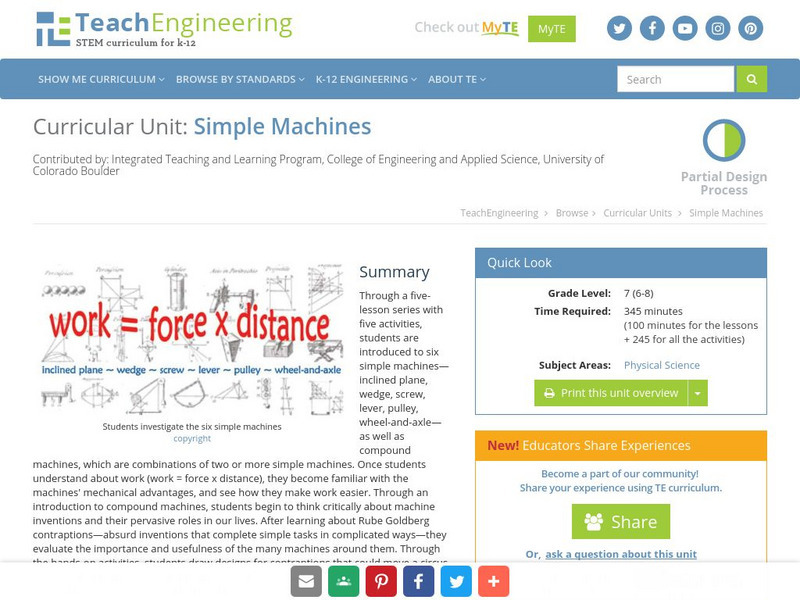Through a five-lesson series with five hands-on activities, students are introduced to six simple machines - inclined plane, wedge, screw, lever, pulley, wheel-and-axle - as well as compound machines, which are combinations of two or more simple machines. Once students understand about work (work = force x distance), they become familiar with the machines' mechanical advantages, and see how they make work easier. Through an introduction to compound machines, students begin to think critically about machine inventions and their pervasive roles in our lives. After learning about Rube Goldberg contraptions - absurd inventions that complete simple tasks in complicated ways - they evaluate the importance and usefulness of the many machines around them. Through the hands-on activities, students draw designs for contraptions that could move a circus elephant into a rail car, create a construction site ramp design by measuring different inclined planes and calculating the ideal vs. actual mechanical advantage of each, compare the theoretical and actual mechanical advantages of different pulley systems conceived to save a whale, build and test grape catapults made with popsicle sticks and rubber bands, and follow the steps of the engineering design process to design and build Rube Goldberg machines.
